
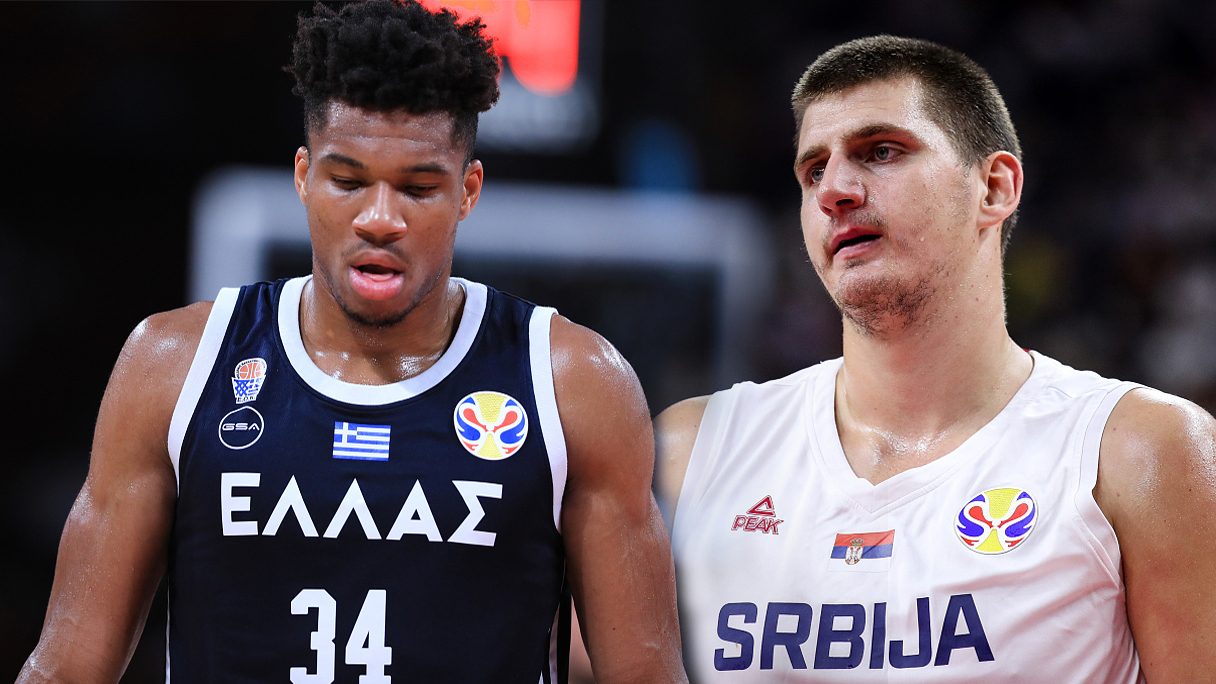
The two teams that will meet in the FIBA Basketball World Cup Final on Sunday, Spain and Argentina, have in total four NBA players. By contrast, USA, comprised exclusively of NBA talent; Serbia, led by the league's No. 1 center; and Greece, led by 2019 NBA MVP Giannis Antetokounmpo, all failed to make the final.
How did this happen? Why is it that the best players from the world's best basketball league failed to match their success in the World Cup?
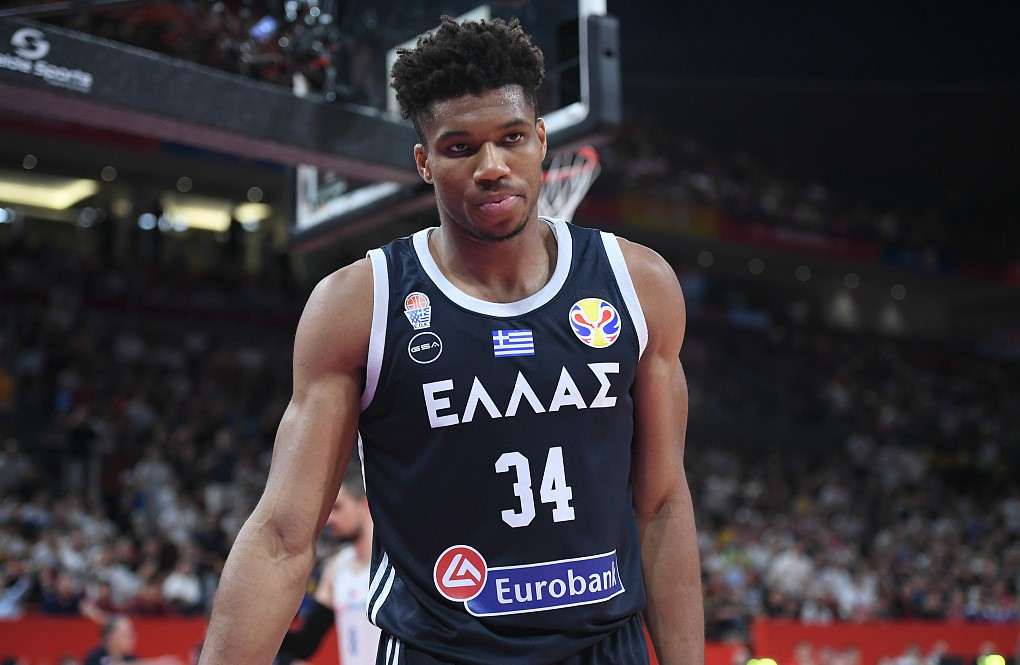
Giannis Antetokounmpo of Greece looks dejected as his team faces Czech Republic in the FIBA Basketball World Cup in Shenzhen, China, September 9, 2019. /VCG Photo
For starters, the difference in game rules between NBA and FIBA events was to blame. Without the defensive three-second violation, big men could stay comfortably in the paint, waiting for opponents to throw themselves into a zone defense trap. Besides, FIBA has a shorter 3-point line, meaning that players can help defend shots faster than they do in the NBA.
Antetokounmpo became the biggest victim of the above case. His signature offensive move of assaulting the rim using his monstrous power and stride length ceased to work with two or even three defenders in front of him. When he tried to post up, the double or triple team would also come sooner than expected.
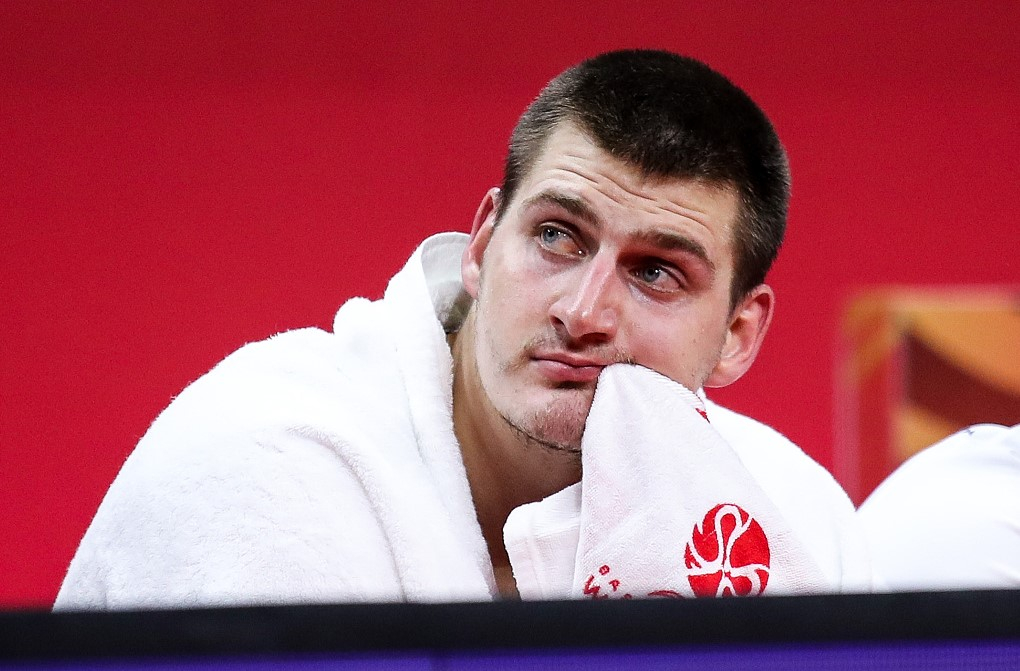
Nikola Jokic of Serbia sits on the bench during the quarterfinal game against Argentina in the FIBA Basketball World Cup in Dongguan, China, September 10, 2019. /VCG Photo
Unlike on their NBA teams, many superstars have to play with teammates that they've only known for one or two weeks in the World Cup. There's rarely enough chemistry between them and more importantly, the national teams often have their own systems which are not built around the NBA stars. As a result, NBA players often cannot do what they do best and have to do extra work that they don’t like.
The Greek Freak again suffered from this. When he was with the Milwaukee Bucks, he usually had four shooters join him on the court. Such an arrangement not only stretched the defense, allowing him to maximize his penetration, but also helped his poor shooting. However, when Antetokounmpo was with the Greek national team, he did not have enough shooters to support him, not to mention that he did not always catch the ball.
Nikola Jokic also struggled to adapt to the different style. With the Denver Nuggets, Jokic was literally in every part of the team's offense – he set screens for teammates, posted up, ran a catch-and-shoot attack, carried the ball up the court, orchestrated around the free throw line and competed for offensive rebounds. The Joker was in absolute charge of Denver's offense and could make every decision by himself. Nonetheless, the national team only saw him as a big man who had shooting range and passing ability. Without enough decision-making power, Jokic lost his magic on offense.
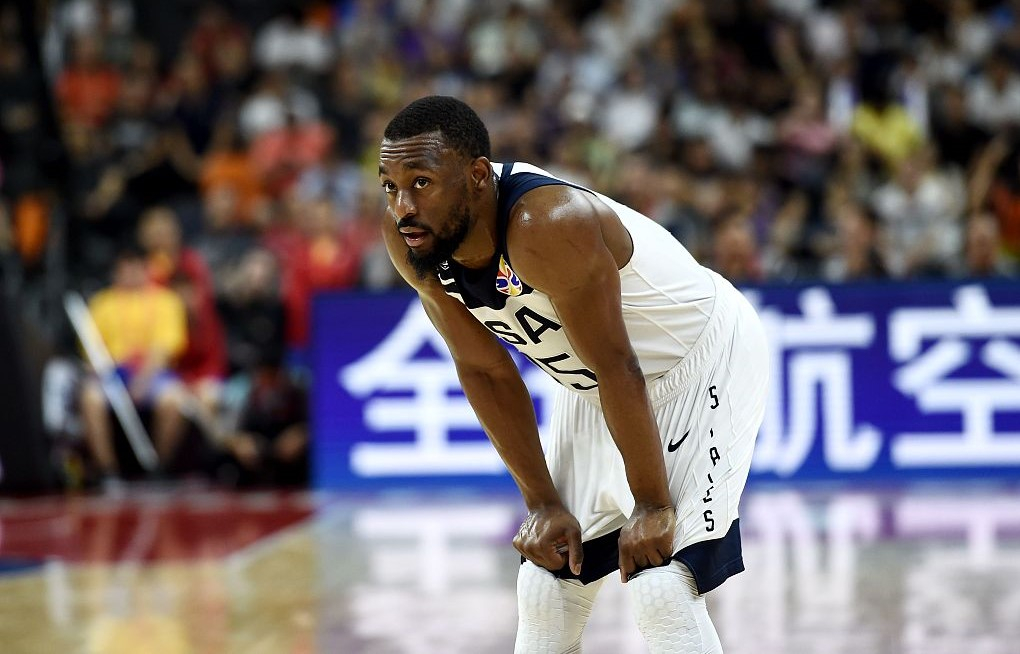
Team USA's Kemba Walker in the quarterfinal game against France in the FIBA Basketball World Cup in Dongguan, China, September 11, 2019. /VCG Photo
USA are a special case in this situation because their players have different stories. The 12 NBA players could be separated into two groups: team leaders and quality role players. Leaders like Kemba Walker only had one job in the NBA, to score. His Charlotte Hornets teammates would set screens and chase rebounds for him. However, the national team saw Walker as an offensive spark who could break the team's shooting slumps when needed, and a player who could score in isolation. This not only hurt Walker's value on the court, but also exposed the disadvantage of his small size.
By contrast, Donovan Mitchell did a better job than Walker because he was accustomed to this role with the Utah Jazz.
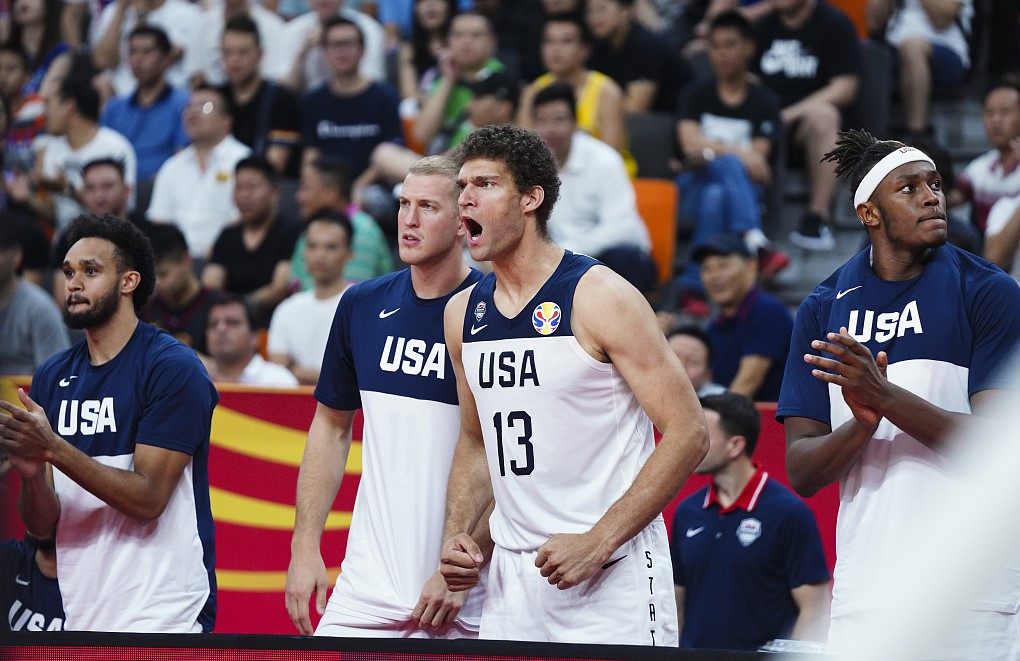
Team USA's Brook Lopez (#13) encourages his teammates in the quarterfinal game against France in the FIBA Basketball World Cup in Dongguan, China, September 11, 2019. /VCG Photo
Let's take Brook Lopez as an example for role players. The Bucks' seven-footer only needed to do two things: shoot 3-pointers and protect the rim. When he grew cold, other teammates could take over. When he was too slow to guard the perimeter players, Antetokounmpo was ready with help on defense. Nonetheless, Lopez could not afford to miss shots on the national team because they only had two good shooters. Besides, when he was the only big guy on the court, no one could help him on defense either.
Now we know what it takes to make a team work in FIBA events. First, players must be familiar with each other; second, they must have a complete skill set and be able to contribute instantly. Two teams actually met these standards – Argentina and Spain. Every player on Argentina's roster can shoot and pass. And on Spain's team, Marc Gasol can do everything, from passing, protecting the rim, switching defense and stretching the floor. But most importantly, both teams selected most of their players from La Liga ACB where they have known each other and played with (against) each other for years.

Copyright © 2018 CGTN. Beijing ICP prepared NO.16065310-3
Copyright © 2018 CGTN. Beijing ICP prepared NO.16065310-3